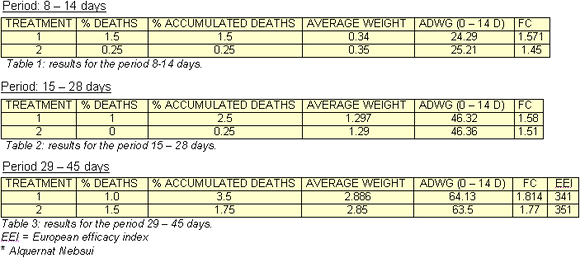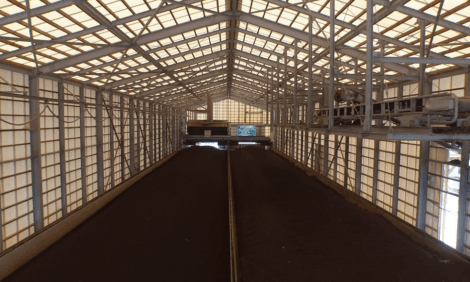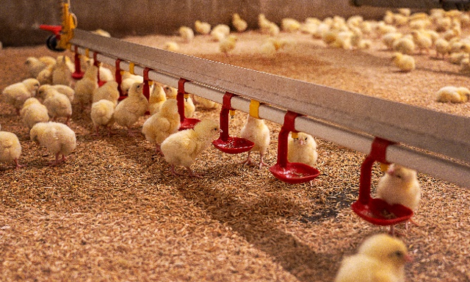



Benefits Of The Use Of Natural Pronutrients In Veterinary
By Dr Jaime Borrell - The intensification of animal production has been made possible mainly due to the advances made in the field of genetics. The appearance of highly productive stock has resulted in the development and aplication of different feed patterns.
 Dr Jaime Borrell
Doctor in Veterinary Sciences since 1973 (University of Córdoba). Founder and manager of Biovet S.A. Laboratories since 1984. Royal Academy of Veterinary Sciences since 1990. Professor associated with the Veterinary Faculty of the private University of Alberto Masferrer since 2003. |
PART I: INTRODUCTION
On the one hand the nutritional necessities had to be reconsidered and on the other hand the incorporation of certain chemical substances which have been used prophylactically until then (like the antibiotic growth promoters) had to be introduced as the breeding calendars underwent mayor changes.
The current tendency at a worldwide level is to reduce the use of chemical substances with prophylactic character, permitting their use only for therapeutic means. Therefore the investigation on efficient alternatives has been so necessary.
One of these alternatives is the application of the latest advances in nutrition to strengthen and maintain the health condition of the animal. This is done by administrating nutritional supplements, whose main objective is to attribute pronutrients that are included as ingredients in the feed formulation.
I.1 DEFINITION AND ORIGIN OF PRONUTRIENTS
The term pronutrient was defined for the first time by Dr. Gordon Rosen, in the mid-1950s as being a microingredient included in feed in relatively small quantities in order to improve the physiology and the intrinsic nutritional value and to prevent the presence of pathogenes.
Rosen classified the pronutrients in four groups according to their origin and function:
- Microbial pronutrients
- Antimicrobial pronutrients
- Feed conditioners (compacters, flavours, oxidation inhibiters)
- Prophylactics
This first classification admitted the bacterial, vegetal and mineral origin of the pronutrients. Since this first classification by Dr. Gordon Rosen the feed industry and legislation have changed considerably making a revision of the definition, the classification and the origin of the pronutrients necessary.
We consider that the definition of Dr. Gordon Rosen should be maintained and that only the classification and origin of the pronutrients should be revised. This way a pronutrient is still defined as a microingredient included in the feed formulation in relatively small quantities in order to improve the physiology and the intrinsic nutritional value and to prevent the presence of pathogenes.
Eventhough the early classification mixed concepts like origin and function, it seems more apropriate to classify pronutrients according to their function:
- Intestinal conditioners
- Intestinal optimizers
- Hepatic protectors
- Immune modulator
- Mineral absorption promoters
- Feed conditioners (flavours, encimes, oxidation inhibiters)
- Anti free radicals
- Epithelium optimizers
- Hypophyseal conditioners
- Ruminal and intestinal prebiotics
I.2. PRINCIPLE PRONUTRIENT GROUPS
- CONDITIONERS OF THE INTESTINAL MUCUS
Maintain the physiological condition of the intestinal tract, by maintaining its digestive function, its nutrient absorption of the intestinal content and its prevention of the fixation of pathogenic bacteria to the enterocytes. The are considered an efficient alternative for the antibiotic growth promoters as they, unlike the antibiotic growth promoters, do not alter the intestinal flora nor do they need a withdrawal time.
- OPTIMIZERS OF THE INTESTINAL MUCUS
Strengthen the intestinal mucus and its local immunity. They are considered an efficient alternative to the chemical coccidiostatics, as they do not create resistances nor have a toxic effect.
- HEPATO PROTECTORS
Act specifically in the liver, promoting the hepatic detoxification and having an oxidation inhibiting action. The optimal functioning of the hepatocyte assures an efficient detoxification, protecting it from the damage produced by mycotoxins and other contaminants: antibiotics, anthelmintics and diverse chemical substances. They are considered an efficient alternative to the secundary hepato-protectors.
- IMMUNE ENHANCERS
Increase the immune response. Its use is of special interest if it is combined with the administration of vaccines.
- PROMOTERS OF MINERAL ABSORPTION
Favour the absorption, bio-availability and use of calcium, phosphorus and magnesium in the feed. Its main points of interest are its possibilities to improve the egg production and the quality of the egg shell as well as to cover the mineral deficiencies produced under certain conditions like caloric stress, mycotoxins in feed, secondary infections and other reasons.
- FEED OPTIMIZER
Maintain or improve the characteristics of the feed by contributing flavours, enzymes or preservative agents of the phenolic type.
- ANTI FREE RADICALS
Bind the free radicals to the tissues (O2 y OH-) which are generated enzymatically through the Xantina/XO system and non-enzymatically through the system NADH-metosulphate of fenacine. They are considered a natural alternative to the synthetic anti-inflammatories.
- CONDITIONERS OF THE EPITHILIOS
Favour the physiology of the principle epithelios: skin, respiratory, kidney (tubular) and transitional (renal pelvis).
- CONDITIONER OF THE HYPOPHYSEAL
Favour the bio-synthesis of the prostaglandines contributing fatty trienoic acids which are precursors of these prostaglandines. They are considered a natural alternative to the hormones.
- RUMINAL AND INTESTINAL PREBIOTICS
Stimulate the growth of intestinal and ruminal bacteria. The ruminal bacteria of more interest are the cellulolytes whose activity produces an increase in TVFA and proponic acid (glucogenic). The intestinal bacteria of more interest are the acidophyls whose activity produces an increase in the production of bacteriocins and lactic acids.
PART II: CONDITIONERS OF THE INTESTINAL MUCUS
II.1 DESCRIPTION AND ACTION MECHANISM
The conditioners of the intestinal mucus maintain or restore the physiological condition of the digestive tract. Its action is based on the functional character (digestion), absorption and control of the colonizing flora. The pronutrients act together as conditioners of the intestinal mucus eventhough they come from natural plant extracts with different functions. Some of these plants are:
- Gingerol and Shognol present in Zingiber Officinalis (belonging to the family of the Zingiberaceae). These pronutrients are found mainly in the root.
- Delphinidin diglycoside and malvidine pentosa glycoside present in Punica Granatum (belonging to the family of the Punicaceae). These pronutrients are found mainly in the fruit.
- Marmelide present in Aegle Marmelos (belonging to the family of the Rutaceae), found mainly in the fruit.
- Ellagic acid present in Woodforida Fructicosa (belonging to the family of the Lythraceae) found mainly in the flower.
- Connesina and holarrhenine present in Holarrhena antidysenterica (belonging to the family of the ), found mainly in the bark.
In short, the pronutrients act
- stabilizing the intestinal peristalsis, improving the adecuate transit of the nutrients (proteins, vitamins, minerals, electrolites….) through the lumen, allowing for its optimal absorption.
- contributing to the formation of an exclusion gel. This gel is made of an array of polysacharrides that permit the separation of the molecules according to their size, facilitating the absorption of the smaller molecules. Also, this gel acts as a base for the growth of certain bacteria (acidophils) that act as probiotics impeding the development and multiplication of pathogenic bacteria. The probiotic action produced by the acidophil bacteria which synthesize substances such as acidophiline, cataboline and certain enzymes like peroxidase.
- favour the reabsorption of the gas.
- maintain the physiological condition of the intestinal mucus.
Comparison of the efficacy of pronutrients and antibiotic growth promoters.
During a period of 45 days two types of treatment were administered and the following parametres were analyzed:
- % deaths
- % accumulated deaths
- average weight
- average daily weight gain (ADWG)
- feed conversion (FC)
- Treatment 1: the animals were treated with an antibiotic growth promoter and chemical coccidiostatics belonging to the family of the carbanilides and the group of the ionophores, with the following dosis: Avilamicine (0-44 d) + carbanilamide nº (0-14 d) + carbanilamide nº2 (15-28 d) + ionophore (29-40 d) + no treatment from day 41 - 45.
- Treatment 2: the animals were treated with a pronutrient that substituted the avilamicine, maintaining intact the rest of the treatment, with the following dosis:
INTESTINAL CONDITIONERS* (0-44 d) + carbanilamide nº (0-14 d) + carbanilamide nº2 (15-28 d) + ionophore (29-40 d) + no treatment from day 41 - 45.

Conclusions
The animals that were treated with INTESTINAL CONDITIONER* showed a lower % of deaths, better feed conversion as well as a higher efficacy index. Therefore, the use of INTESTINAL CONDITIONER* proves to be a good alternative for the use of antibiotics obtaining markedly better results.
November 2006








